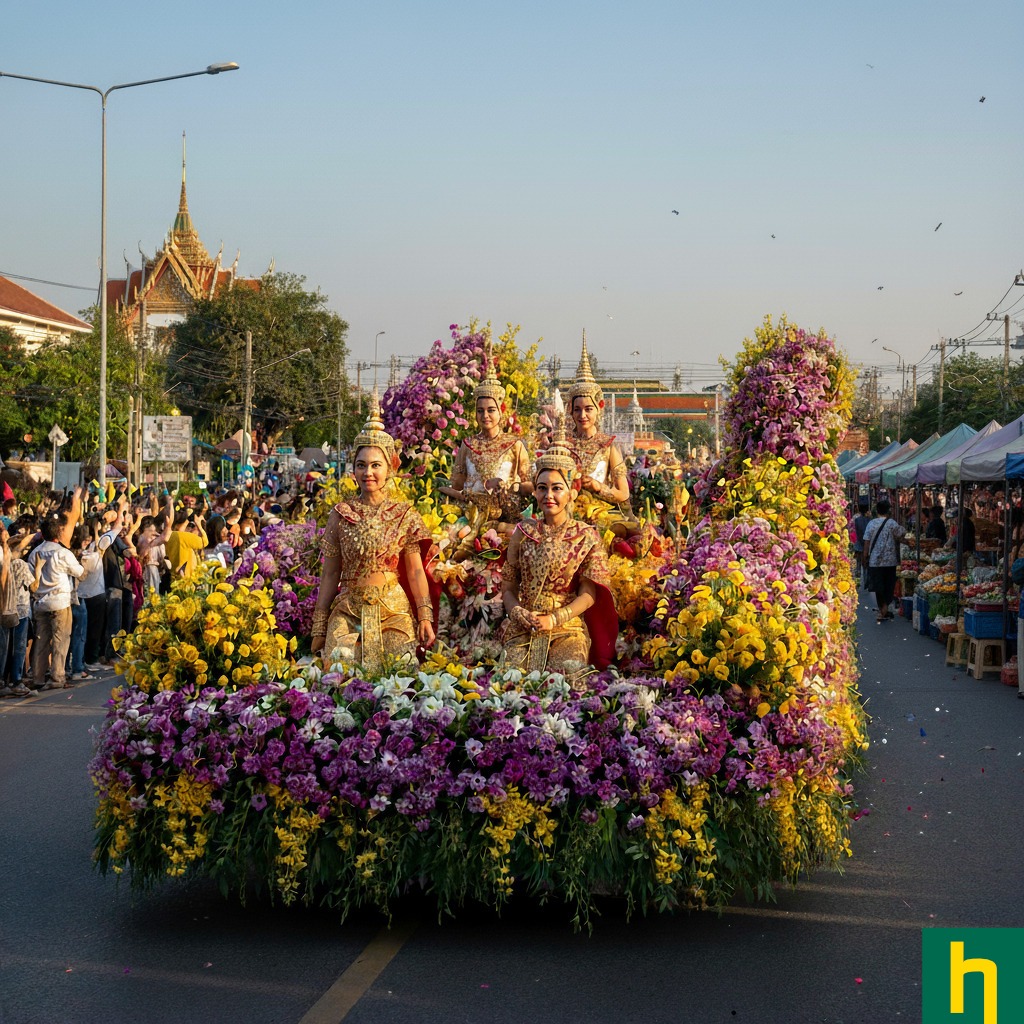The Lanna Kingdom city of Chiang Mai, often referred to as the “Rose of the North,” is known for its Buddhistt temples, cooler climate and profound cultural heritage. But for three days at the close of the cool season, the city bursts into a spectacle that truly embodies its floral moniker: the Chiang Mai Flower Festival.
Much more than a garden show, it’s an annual horticultural phenomenon held over the first weekend of February. The festival marks the moment when the region’s climate—cool enough for temperate blooms yet tropical enough for orchids—delivers a breathtaking display. Visitors are struck by the sheer colour and fragrance – a sharp, sweet air created by millions of blossoms.
A Source of Civic Pride
First established in the 1970s, the flower show has grown from a local agricultural exhibition into a major international tourist draw. For the locals, it’s a source of civic pride. What most don’t know is that the festival is a year-long competition among local communities, schools, and horticultural societies. The magnificent floral floats and park displays are not only beautiful, but are rooted in authentic Lanna craftsmanship and tradition. The pride is justified, particularly when locals showcase indigenous flora like the Damask Rose, found only in the mountainous regions of Northern Thailand.
Key Facts for the Heritage Traveller
For the culturally-minded traveller, understanding the geography and timing is essential. The festival is centralised around two key locations:
Nong Buak Haad Public Park (The Floral Hub): This park, located at the southwest corner of the Old City moat, transforms into the main exhibition centre. It’s here that you’ll find the stunning garden displays, the competitive plant stalls, and the evening light displays. The prize-winning floats are also parked on Sunday.
The Grand Parade Route: The spectacular procession takes place on Saturday morning, beginning near the Nawarat Bridge on the eastern side of the city and tracing a route along the iconic moat before concluding at Nong Buak Haad Park. This parade is the definitive moment to witness the elaborate floats and traditional Lanna dancers in their finest attire.
The Chiang Mai Flower Festival is a perfect lens through which to view the natural wealth of Northern Thailand.
The Cultural Heart of the Bloom: Festival Highlights
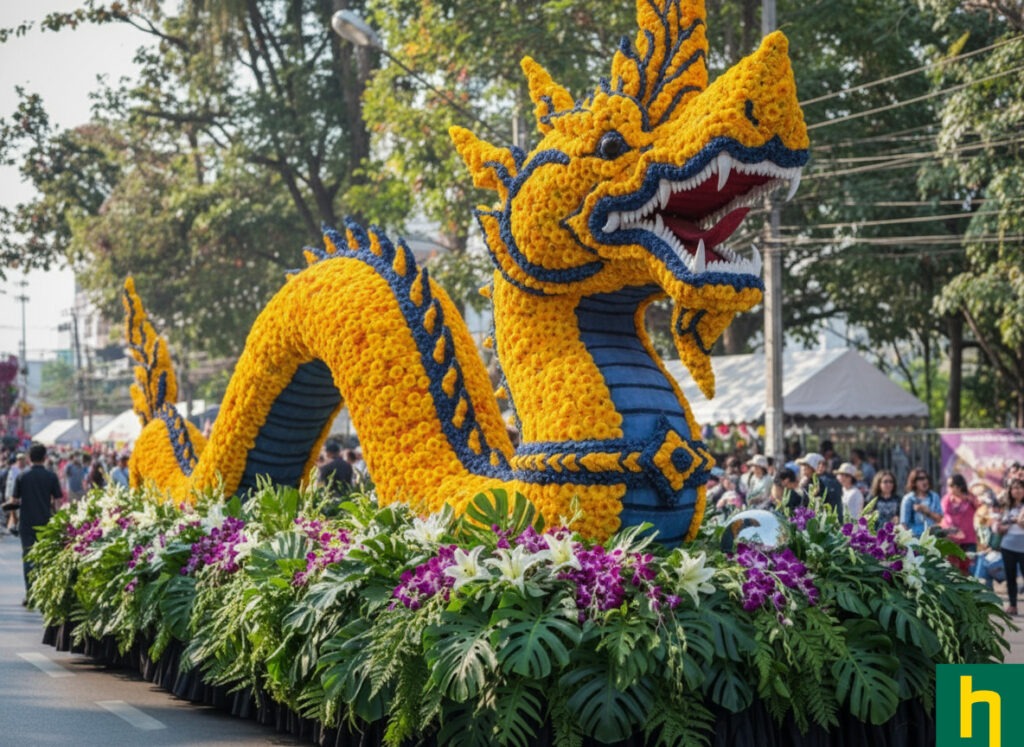
The three days of the Chiang Mai Flower Festival are structured around three distinct spectacles of Lanna culture. This carefully orchestrated series of events makes this occasion a compulsory study for the heritage traveller.
The Grand Floral Float Parade: A Moving Lanna Tapestry
The undisputed highlight is the Grand Parade on Saturday morning. This procession serves as a competitive showcase of local tradition and mythological storytelling.
Fact: The floats themselves are works of competitive art. Organisations, schools, and districts within Chiang Mai province spend months designing these mammoth structures, which must be entirely covered in fresh blooms—often over a million individual flowers per float. Prizes are awarded not just for beauty, but for the themes that celebrate Lanna history and mythology.
Look closely at the floats, and you’ll see physical manifestations of Northern Thai beliefs, including:
- Mythological Creatures: The Naga (serpent deity) and various creatures from the Himmapan Forest (a mythical forest at the foot of Mount Meru).
- Temple Replicas: Scale models of revered local wats (temples) like Wat Phra That Doi Suthep, recreated entirely from petals and leaves.
- Royal Symbolism: Intricate depictions of the Royal Family’s emblems, crafted from specific flowers to convey respect and longevity.
To witness the dedication, arrive early near the Nawarat Bridge—the official starting point. In the pre-dawn cool, you can observe artisans adding the final touches: a last-minute garland of bright yellow or white chrysanthemums, or a perfectly placed Damask Rose – used for its local rarity. This scramble to achieve perfection before the first note of the marching band signals the start is a performance in itself.
Nong Buak Haad Public Park: The Lanna Garden Exhibition
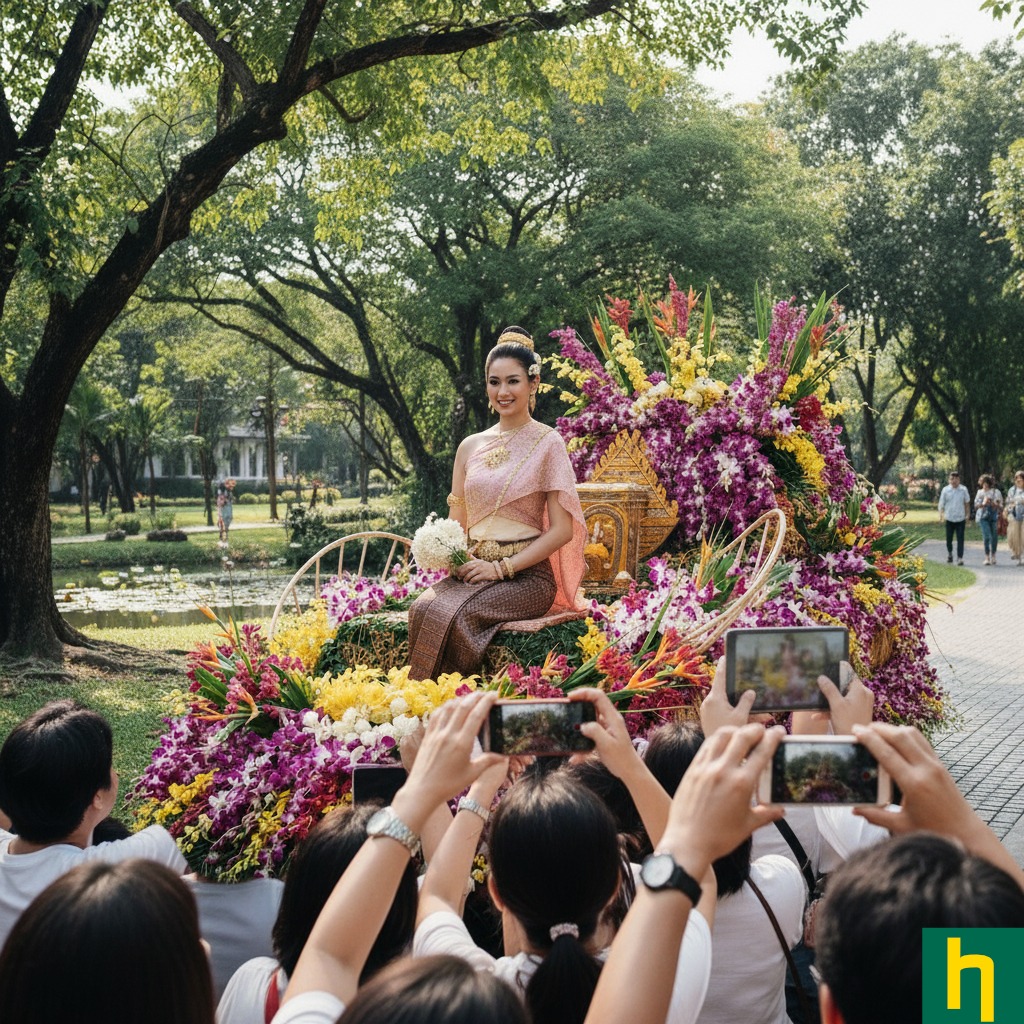
Once the parade has finished its journey along the Old City moat, the activity shifts to Nong Buak Haad Public Park, which becomes the heart of the festival for the weekend.
Fact: The park, locally known as Suan Buak Haad, is situated at the southwest corner of the city. For the festival, every inch of the park is used for displaying award-winning plants, rock gardens, and themed floral landscapes – all demonstrating amazing horticultural skill.
Cultural Content: Beyond the flowers, the park is the stage for:
- Horticultural Competitions: A judging process for the rarest orchids, the perfectly pruned bonsai, and landscaping designs, all of which show Thailand’s historical reverence for natural beauty and agriculture.
- Evening Illumination: As the sun sets, the park transforms. Lights are draped across structures, waterfalls, and displays, turning the floral garden into an ethereal wonderland. This aesthetic is paired with traditional Lanna cultural performances on the main stage, including classical dance and regional music, mixing the old and new Thailand.
Miss Chiang Mai Flower Festival Queen
The final jewel in the festival’s crown is the beauty pageant, the crowning of the Miss Chiang Mai Flower Festival Queen.
Fact: This contest is less glitz, more tradition. Contestants embody the grace, poise, and cultural understanding of the Lanna region. They’re often seen sitting atop the winning floats during the parade, in traditional silks and intricate floral headdresses.
Cultural Role: The pageant culminates in the evening ceremony at Nong Buak Haad Park. The winner is instantly propelled to become an ambassador for Chiang Mai’s beauty for the following year. For visitors, it provides a glimpse into the value Northern Thai society places on traditional feminine elegance and regional pride.
Planning Your Heritage Trip: Practical Traveller’s Guide
Attending a Thai festival requires careful planning. For the Chiang Mai Flower Festival, the logistical challenges of this city centre parade are easily navigated with local knowledge, ensuring your focus remains on the heritage, not the gridlock.
Mastering the Parade Viewing Strategy
The secret to enjoying the floral parade is timing and positioning.
Fact: The Saturday morning parade is less a hurried procession and more a slow, dramatic spectacle, pausing frequently to allow onlookers to appreciate the floats and performers. This leisurely pace is both a blessing and a challenge for crowd management.
Key Time to Arrive
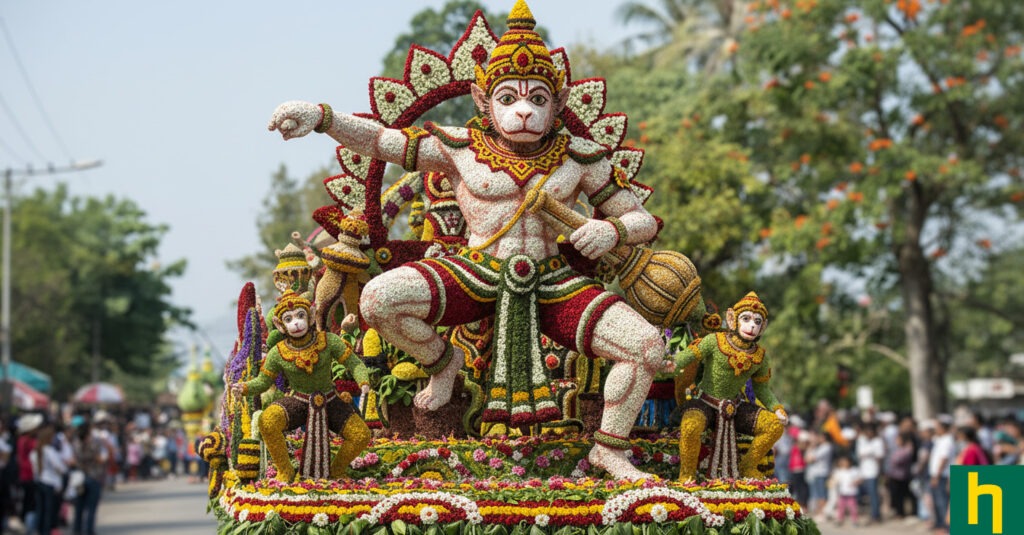
Nawarat Bridge
The starting point. High energy, and the floats are at their freshest. Allows you to see the participants preparing in their traditional Lanna costumes.
7:00 AM – 7:30 AM (Before the 8:00/9:00 AM start)
Thapae Gate
The most photogenic backdrop, with the historic gate framing the floats. Expect the heaviest crowds and potential bottlenecking.
8:00 AM (To secure a spot against the barricade)
Along the Southern Moat
A quieter stretch of the floral float parade route before the final destination. Better for continuous viewing and photos without major congestion.
9:00 AM – 10:00 AM (As the parade progresses)
Seasoned photographers often advise catching the parade at the start, then making a brisk walk to Nong Buak Haad Park to capture the floats being parked for the rest of the weekend, allowing for close-up inspection after the crowds thin.
Navigating the Festival’s Geography
The biggest challenge during the festival is transportation.
- The Road Closure Reality: On Saturday, roads within the Old City, particularly those bordering the moat and near the final destination of Nong Buak Haad Park, will be completely closed to traffic for several hours.
- Best Transport Advice: Walking is invariably the fastest way to cover short distances near the Old City. For longer journeys, utilise ride-hailing apps like Grab or a local Songthaew (red truck taxi), but be prepared to disembark a reasonable distance from the route and walk the final leg. Attempting to drive or ride a scooter directly into the festival area is strongly discouraged.
- Accommodation Tip: For maximum convenience, consider lodging within the Old City near the Nawarat Bridge, allowing you to access the event on foot.
Deepening the Experience with Lanna Cuisine
No heritage trip to Chiang Mai is complete without engaging with its Burmese-influenced gastronomy—Lanna cuisine. The festival provides an ideal opportunity to sample authentic Northern dishes from the numerous temporary food stalls around the park and along the moat.
Khao Soi
The region’s signature dish: a creamy, coconut curry noodle soup topped with crispy fried noodles. An excellent example of the Burmese influence on Lanna cooking.
Sai Oua
Northern Thai herbal pork sausage is typically served grilled. Its blend of herbs, lemongrass, and chilli is a distinct flavour profile of the North.
Gaeng Hang Lay
A rich, slow-cooked pork belly curry. Unlike Southern curries, this dish uses ginger and tamarind but no coconut milk, showcasing a unique regional style.
Fact: Many award-winning local restaurants near the Old City serve special festival menus, offering travellers an authentic taste of the Lanna Kingdom.
The Heritage Trail: Beyond the Main Event
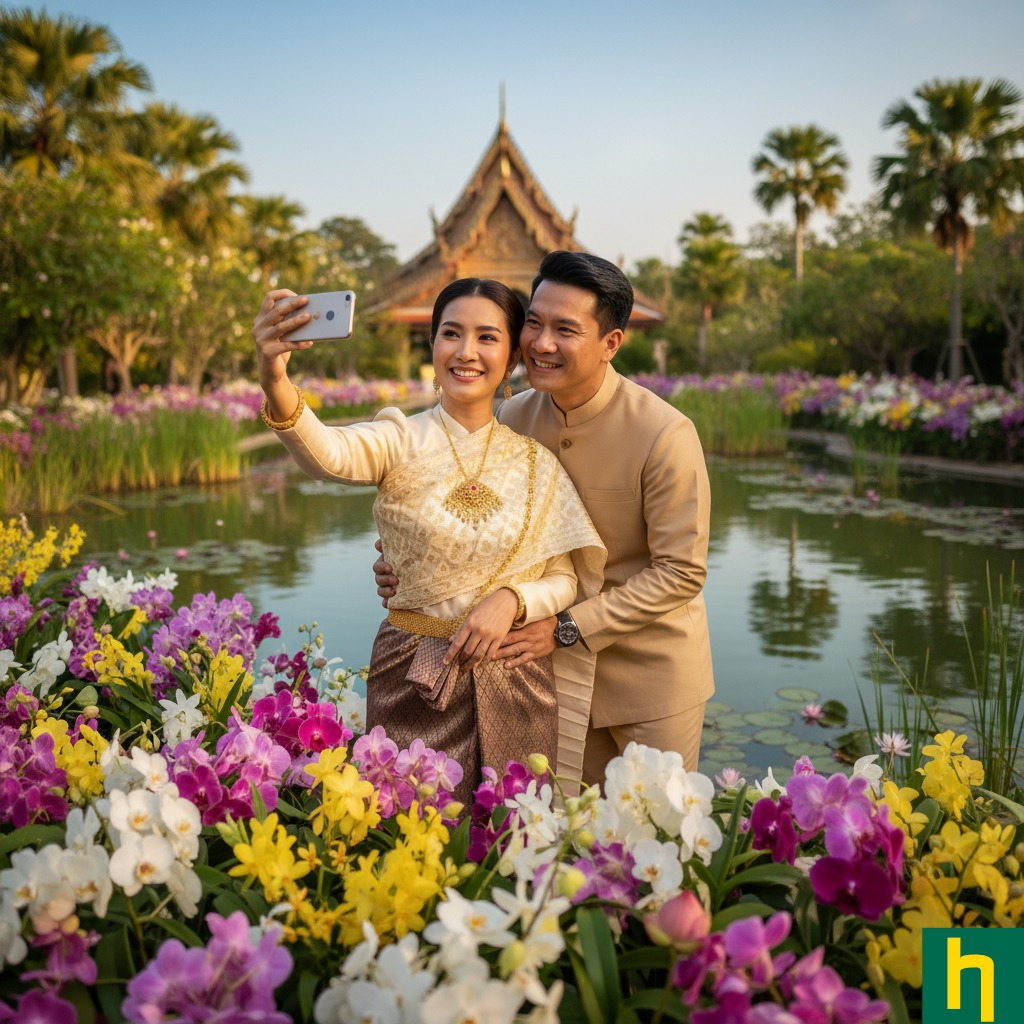
While the three-day festival in the heart of Chiang Mai provides a burst of colour and culture, the heritage traveller understands that the “Rose of the North” blooms year-round. Exploring the wider context of Northern Thailand’s flora reveals the deep connection between the natural environment and Lanna culture preservation.
The Royal Garden Legacy
The horticultural excellence showcased at the Flower Festival isn’t a sudden effort; it’s part of a long-standing Royal initiative dedicated to agriculture and botany.
Fact: To fully appreciate the festival, a visit to the Royal Park Rajapruek or the Queen Sirikit Botanic Garden is essential. These institutions, just a short journey outside the city, were established under the patronage of the Thai Royal Family. They preserve exotic and indigenous species, demonstrating the country’s commitment to sustainable development and environmental stewardship.
Royal Park Rajapruek: Famous for hosting the 2006 International Horticultural Exposition, this vast park features international gardens and the iconic Ho Kham Royal Pavilion in classic Lanna style. The orchids and tropical plants here are in peak condition during February.
Queen Sirikit Botanic Garden: Located in the Mae Rim district, this is a key research and conservation centre. Here, you can delve into Thailand’s plant biodiversity, with extensive glasshouses dedicated to orchids, lilies, and rare ferns.
During the cool season, some high-altitude areas like Khun Chang Khian on Doi Suthep Mountain offer the breathtaking sight of Thai “Sakura” (Wild Himalayan Cherry), blooming in a stunning pink wave from late December through mid-February. These less-visited spots provide a tranquil change to the city’s lively festival atmosphere.
Curating the Lanna Heritage Stay
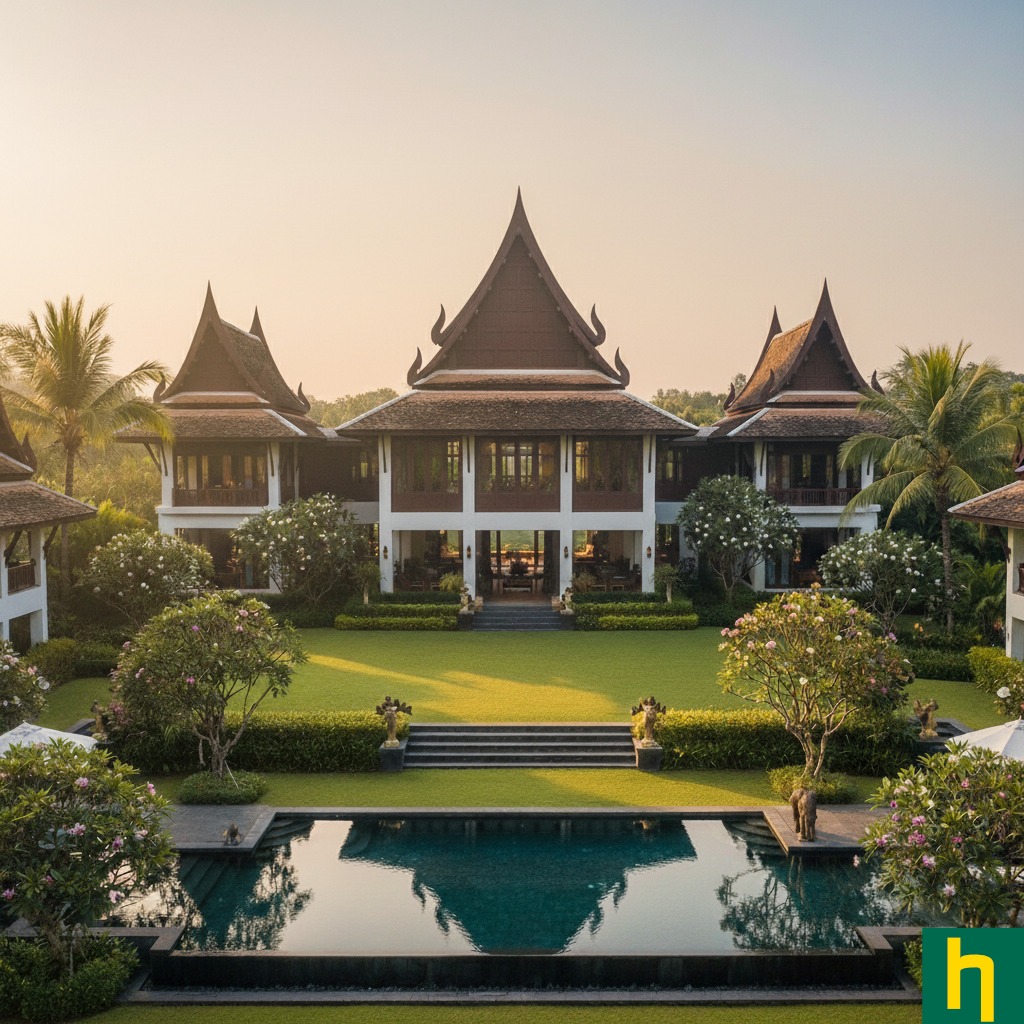
For the heritage traveller, the experience extends to the accommodation. The style of where one stays should reflect the ancient city’s history, offering a peaceful, culturally resonant sanctuary away from the crowds.
The Lanna Boutique Ideal: Chiang Mai excels in boutique heritage hotels that incorporate traditional Lanna architectural elements—dark teak wood, pitched roofs, and serene inner courtyards.
Location Recommendation: Seek out hotels located just inside or immediately adjacent to the Old City moat. This grants easy walkability to the festival grounds and historic temples while providing a quiet retreat.
Fact: Staying in a historically sensitive hotel, such as Tamarind Village or Rachamankha Boutique Hotel, allows a continuous engagement with Lanna aesthetics, turning the simple act of returning to one’s room into an extension of the cultural journey.
Supporting Local Artisanship
The economic engine of the Flower Festival extends beyond ticket sales and hotel bookings.
Handicrafts and Markets: Visitors should seek out the local markets set up around the moat and in Nong Buak Haad Park. Here, artisans sell flower-themed crafts, traditional textiles, and the specific ornamental plants used in the competition.
Lanna Culture Preservation: Purchasing hand-woven fabrics or traditional silverwork supports craft preservation. These items often feature intricate floral and fauna patterns from the region. This patronage is crucial for Lanna culture preservation. It ensures the sustainability of this artistic heritage for future festivals.
A Lasting Cultural Bloom
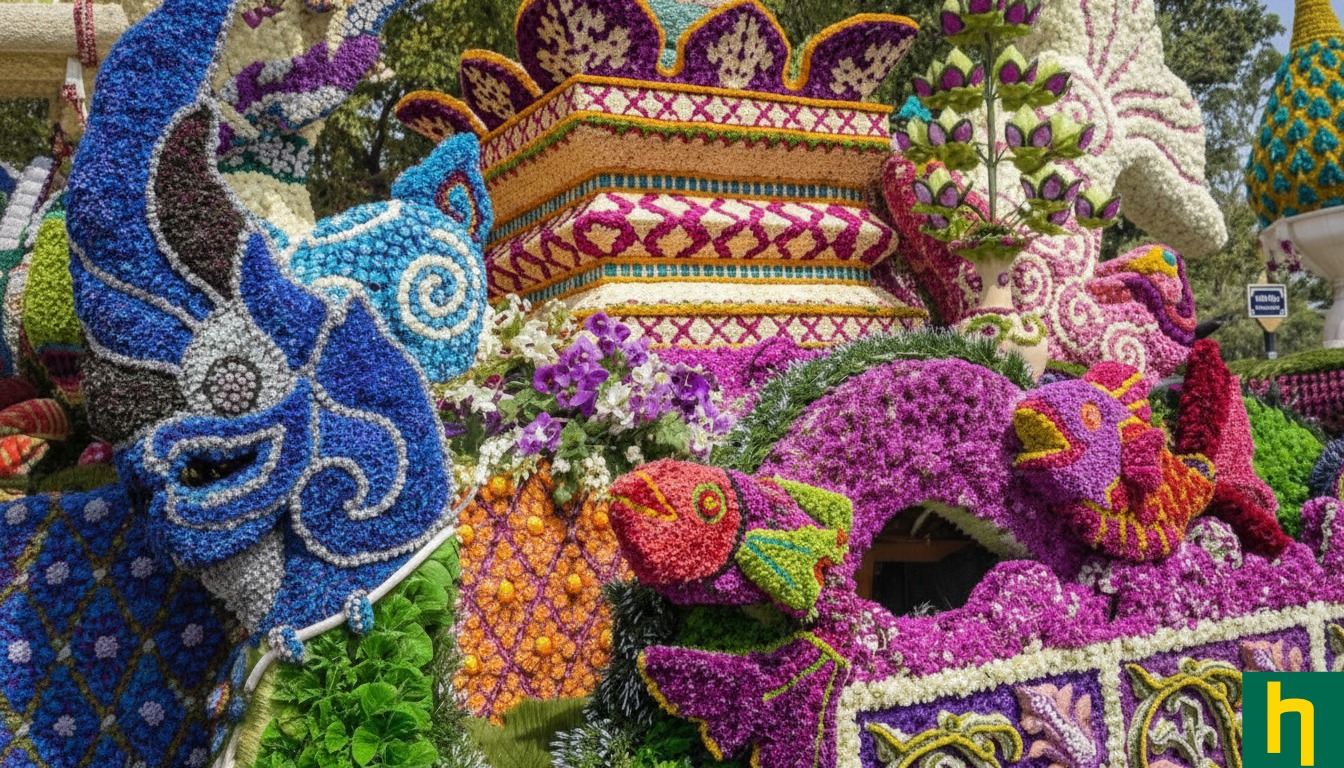
At first glance, the Chiang Mai Flower Festival is a simple celebration of natural beauty. Yet, its significance runs far deeper. Over three days, the city achieves a remarkable mix of horticulture, heritage, and community spirit.
Fact: The festival’s success isn’t solely a tourism effort; it functions as a crucial annual stimulus for the agricultural sector. It creates a visible marketplace for local farmers. They display tropical blooms, like prize-winning orchids and the indigenous Damask Rose. This directly boosts the local economy and preserves specialised knowledge.
The Lanna people profoundly understand their landscape. Their name translates to the “Land of a Million Rice Fields.” Their connection to nature is visible in two ways: the elaborate, fleeting floats and the care of the permanent royal gardens.
After the parade concludes on Saturday and the crowds disperse, the winning floats are often parked near Nong Buak Haad Park until Sunday evening. To see these intricate creations up close is to grasp the dedication poured into this heritage event. It’s a moment of reflection amidst the previous day’s carnival.
The Chiang Mai Flower Festival is a vital, living tradition. It invites the international community not just to observe, nature and heritage. The colours, scents, and stories of the Lanna Kingdom continue to flourish for generations because of this event.
Flower Festival Chiang Mai FAQs
When is the Chiang Mai Flower Festival typically held?
The festival is an annual, three-day event traditionally held during the first weekend of February, marking the conclusion of the region’s cool season when many tropical and temperate flowers are in full bloom. It’s best to confirm specific dates yearly, as they occasionally shift.
What is the undisputed highlight of the festival?
The highlight is the Grand Floral Float Parade, which takes place on Saturday morning. Local communities and horticultural societies spend months decorating elaborate, competitive floats entirely covered in fresh blooms. These floats often depict scenes from Lanna history, Thai mythology (like the Naga), or revered temple replicas.
What time should I arrive to watch the parade?
The parade typically starts around 8:00 AM. For the best experience and to secure a good spot, seasoned visitors recommend arriving at the starting point near the Nawarat Bridge between 7:00 AM and 7:30 AM. Arriving early allows you to see the final touches being added to the floats before they move.
Are there specific flowers unique to the region that visitors should look out for?
Yes. Chiang Mai’s cool climate allows for unique horticulture. Look for the Damask Rose, which is indigenous and found only in Northern Thailand’s mountainous regions, as well as prize-winning orchids and masses of yellow and white chrysanthemums.
How should I navigate transportation during the festival weekend?
Expect significant road closures around the Old City moat and the festival areas on Saturday. Attempting to drive or take a scooter directly into the area is discouraged. Walking is often the fastest and easiest way to get around the Old City. Alternatively, use ride-hailing apps like Grab, but be prepared to disembark a short distance away and walk the final leg.

